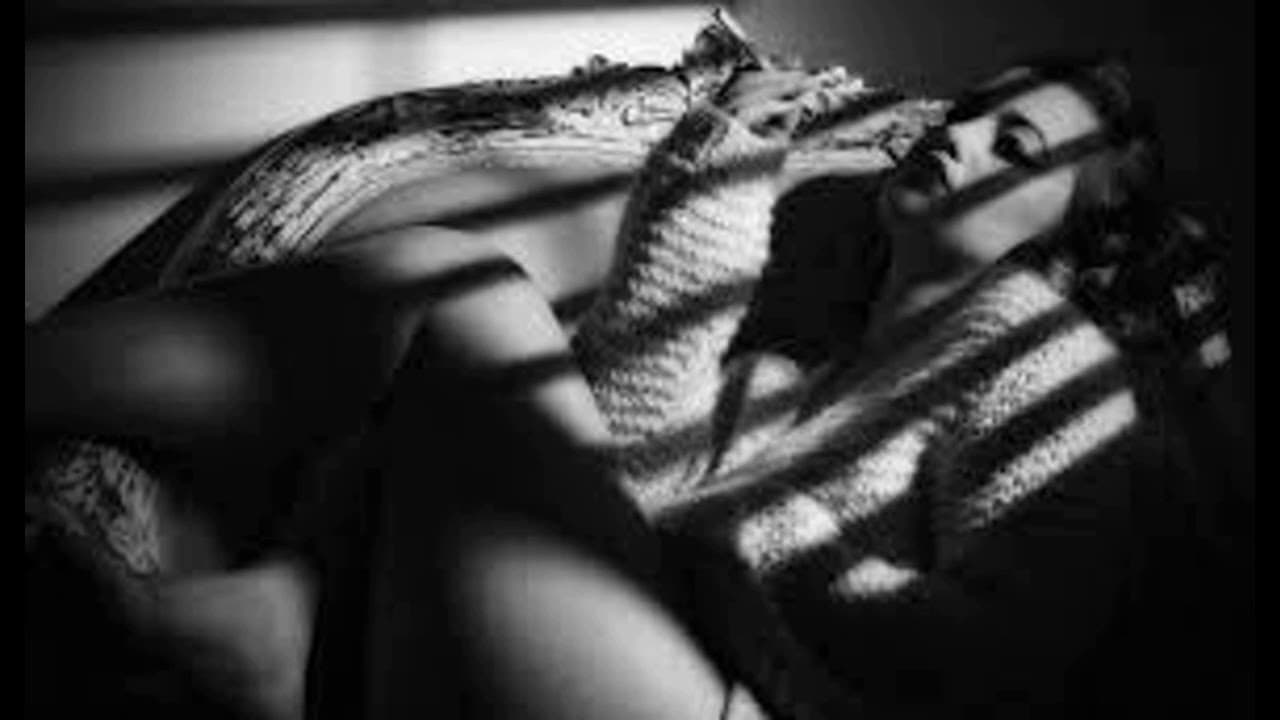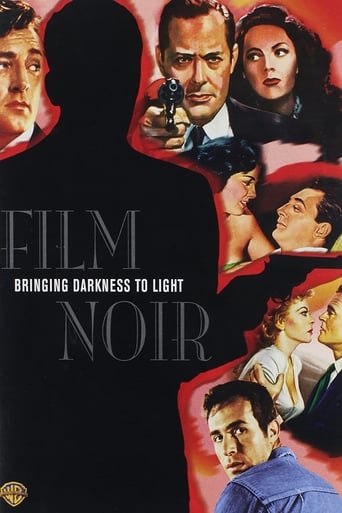



I cannot think of one single thing that I would change about this film. The acting is incomparable, the directing deft, and the writing poignantly brilliant.
View MoreI wanted to like it more than I actually did... But much of the humor totally escaped me and I walked out only mildly impressed.
View MoreI think this is a new genre that they're all sort of working their way through it and haven't got all the kinks worked out yet but it's a genre that works for me.
View MoreLet me be very fair here, this is not the best movie in my opinion. But, this movie is fun, it has purpose and is very enjoyable to watch.
View More"Film Noir: Bringing Darkness to Light" is an exceptional documentary about film noir--certainly the best I have seen. Aside from one minor problem, it is perfect. Instead of just talking about film noir movies and discussing a few seminal films, this documentary talks to a wide variety of modern filmmakers and asks them important questions--the most important of which is 'what is film noir'. I liked this discussion of what is noir, as the folks interviewed did NOT really seem to agree. One said noir began in 1945--but many examples others gave came before this (such as "The Maltese Falcon" and "Double Indemnity"). Additionally, wonderful discussions occur about the sound, look and dialog of noir--as well as a nice discussion on the morality and psychological aspects of noir. All of this was great--like being in a film class. BUT, the film also forgot, in many cases, to identify which films were being shown as the clips were rolling. To some this isn't a major problem--to me, it's annoying as I want to see these films for myself! Oh well....it's STILL well worth your time and very well made.
View MoreThis superb documentary, featuring clips from 28 different film noir movies, is extremely professionally made. It is intelligently put together, brilliantly edited, and lasts 68 minutes. It was directed by the noted film historian Gary Leva, who knows very well what he is doing, having made 58 documentaries, most of them about the cinema. A serious attempt is made, in a series of interviews, to define 'film noir'. Many of the interviewees are fascinating people with whom one would ideally like to chat for many hours. An unexpected one is Kathleen Turner, star of BODY HEAT, the 1981 film noir. And one of the most interesting people is the woman who edited that film. Leva's conclusion seems to be that the most typical film noir, and one of the best of all, is OUT OF THE PAST (1947, see my review), featuring Robert Mitchum and Jane Greer. Leva takes Greer as possibly the best of the femmes fatale. Many, including myself, would agree with him. (Greer is interviewed in this documentary.) Leva points out that film noir did not really begin in the aftermath of World War II as many people imagine, but had deep roots earlier on, and he cites in particular STRANGER ON THE THIRD FLOOR, which was released in 1940 and was thus pre-War. Some Raymond Chandler films also appeared well before the end of the War, such as THE MALTESE FALCON (1941) and MURDER, MY SWEET (1944). Leva also classifies the remarkable film CAT PEOPLE (1942, see my review) as a film noir, and I would agree. This is despite the fact that most noir films concern doomed men, especially ones led to their doom by femmes fatale, whereas CAT PEOPLE concerns a doomed woman instead. Leva speculates that perhaps the first real film noir may have been Fritz Lang's M (1931). He also stresses the input of émigré German directors in general in Hollywood noir, for they had deep familiarity with German expressionism before they fled to America. And Leva makes the point that because they were only making B pictures, the studios left the film noir directors alone and just let them get on with it, which enabled genuine creativity and cinematic innovation to flow, albeit on slim budgets. He points out that atmospheric expressionist lighting was quicker and cheaper than normal lighting and thus went well with the small budgets. He also gives a lot of attention to CROSSFIRE (1947), and we get a clip of an earlier interview with its director, Ed Dmytryk. According to Leva, film noir as a cinematic movement culminated and essentially ended with TOUCH OF EVIL in 1958, though as we have seen, BODY HEAT and other modern films have continued the tradition intermittently, often with spectacular success. Leva also thinks of Christopher Nolan as a noir director living in our own times, and Nolan is interviewed in the documentary. Certainly, Nolan's first film, FOLLOWING, which came out in 1998, was a sensationally brilliant noir film, as I emphatically pointed out in my review of it for IMDb. Like the old noirs, it was made on a minuscule budget, and I described it as 'a triumph of genius over money'. I have not kept up with Nolan's work entirely, because I don't have any interest in Batman, but I greatly admired INCEPTION (2010, see my review). Naturally, there are many classic noirs of which we do not catch glimpses in this documentary, including some of the most famous, like GILDA (1946, see my review). Maybe there were problems getting the right to use clips with many of them. And you can't do everything in 68 minutes. But this is a whopper of a thoughtful summary. Leva is misnamed, because he does not engage here in Leva-ty, instead it is all pretty profound stuff. This documentary comes on a separate disc of its own in the 6-disc box set FILM NOIR CLASSIC COLLECTION Vol. 3 from Warner Brothers.
View MoreIt's always interesting to hear knowledgeable talking heads, using clips from half a dozen or so films, try to define what "film noir" means. Those wretched French are at it again, confusing the rest of us.But these guys ought to know what they're talking about. And I'm only kidding about the French, who first identified and named the genre. Bernard Tavernier is one of the heads, as far as that goes. Without the enthusiastic fellows at Cahiers du Cinema we might still be talking about "detective movies" or "murder mysteries" or something.It's quite a challenge, actually, defining film noir. No SINGLE element seems either necessary nor sufficient. Darkness, mystery, murder, a treacherous femme fatal? That's a Charlie Chan movie.This documentary is split up into sections with independent headers or chapters. "Strange Angles", for instance. I didn't count them but there are six or seven probably. No element described in these chapters defines film noir but when you put them all together you have a reasonably clear idea of what's up, though some graininess remains in the image.The talking heads are an impressive lot and they cover a lot of territory, including the question of just when films noir began and where their sometimes striking imagery originated. The consensus: they probably began with Fritz Lang's "M" and came out of UFA. The definitions range from James Ellroy's succinct, "Film noir means you're (the past tense of the F bomb)" to Paul Schrader's more thoughtful and articulate mental meanderings.It's too bad that clips aren't shown from more than a handful of exemplary movies. If "M" was one of the first, it would have been interesting to see a clip from "M' that illustrates the reasons behind that logic. Instead, there are multiple clips from "Out of the Past", "Murder My Sweet," and "On Dangerous Ground" -- admittedly icons but a lot is being left out. And there's nothing at all from so-called "neo noirs" like "Chinatown" or "Farewell, My Lovely," which illustrate some of the elements better than older flicks. The particular choice of exemplars looks a little like promotion to me because -- I'm not sure about this -- most or all of the movies we see having been issued as parts of boxed sets. I hope I'm wrong because that would turn it into 68 minutes of what, as kids, we used to call "Coming Attractions."
View MoreThis DVD compilation of various '40s-'50s movie clips that explore dark themes culled from M-G-M, RKO, and Warner Bros. (since Warners and/or Turner own the films they're from) explores, from multiple viewpoints, the impact Film Noir has had on future filmmakers and the world at large. Among the people interviewed: the departed like Edward Dmytryk, Jane Greer, and Sydney Pollack (as of last week). Also Brian Hegeland, James Ellroy, Paul Schrader, and Frank Miller among others. They talk about music, the men, and, of course, the fem fatale. And they talk about films outside of the library that have no clips shown (such as Paramount's Double Indemnity). Many of them are clips of movies I've yet to see so there's a lot of curiosity on my part to check them out. Of course, that may take a while so it may be a long time before I comment here on them. Stay tuned...
View More